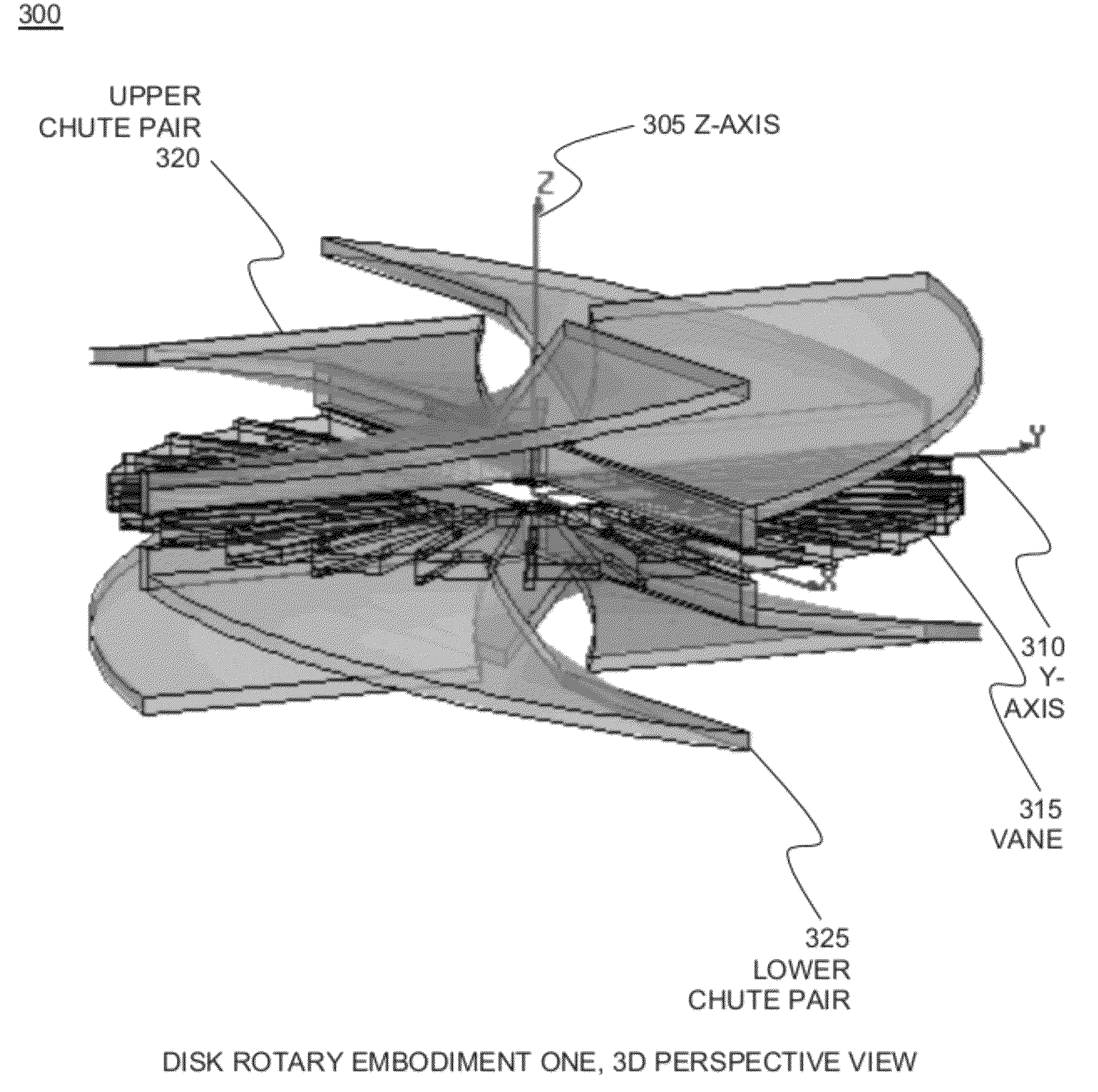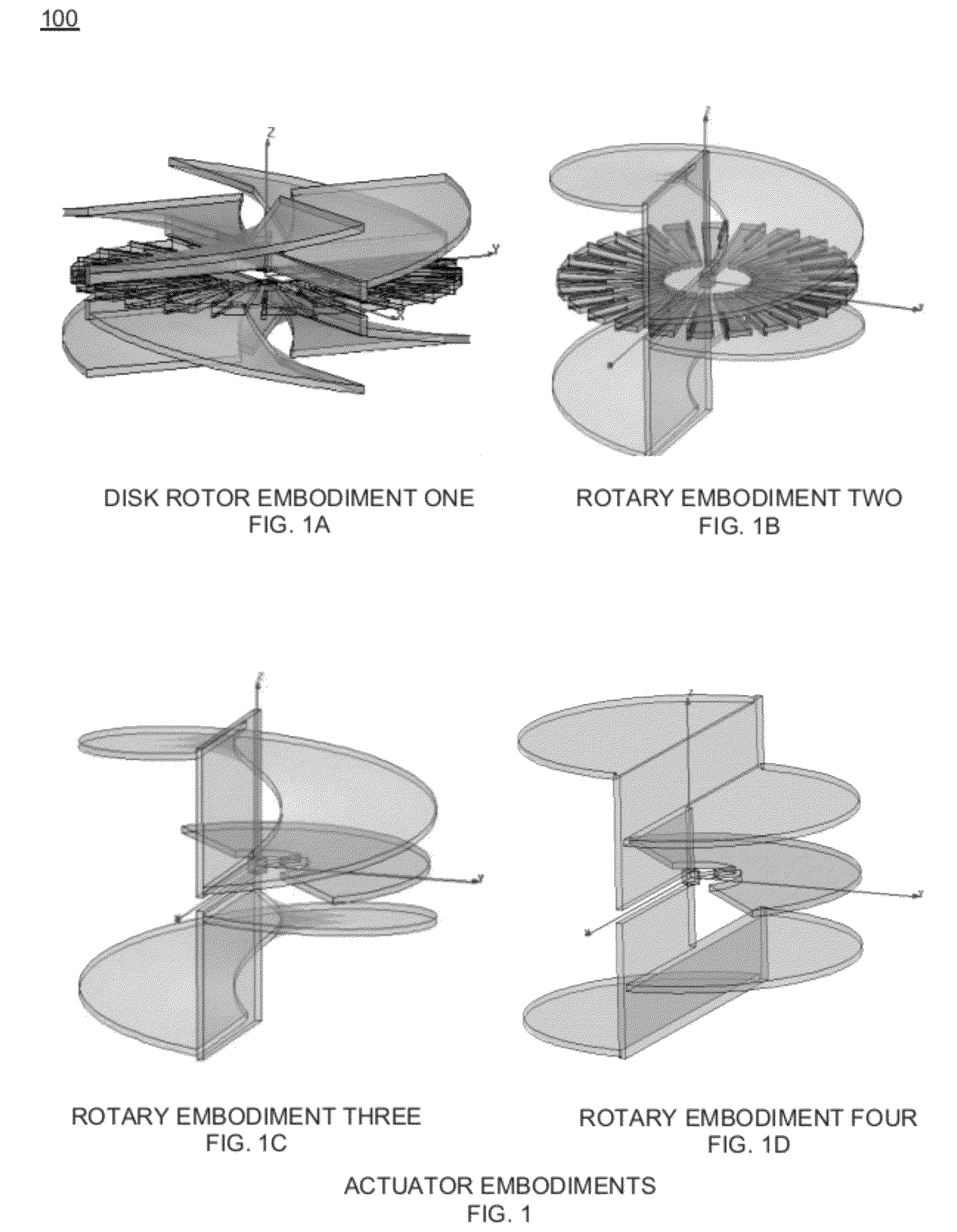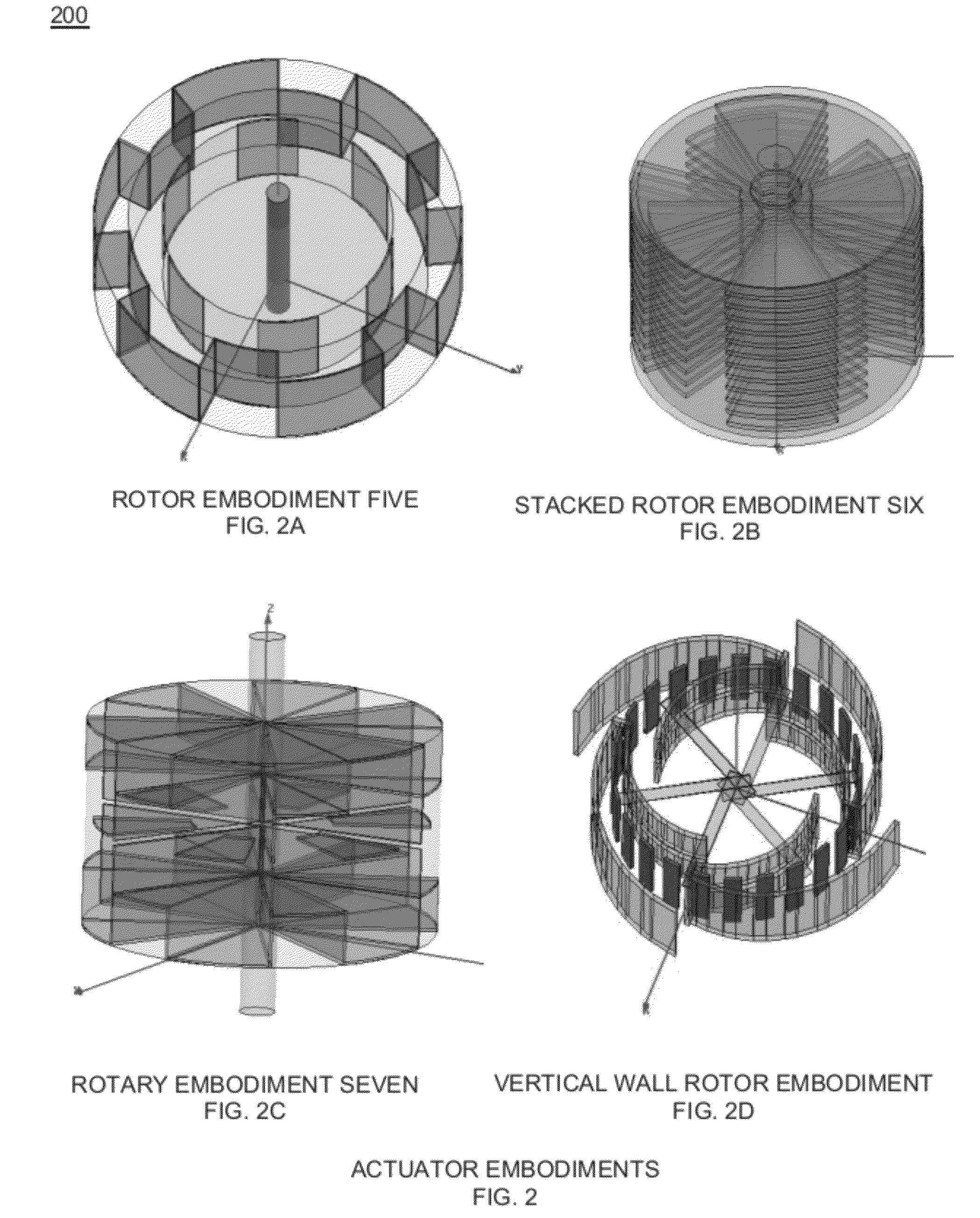Radioisotope fueled rotary actuator for micro and nano vehicles
a rotary actuator and radioisotope technology, applied in the direction of electrostatic motors, electrostatic generators/motors, radiation applications, etc., can solve the problems of significant challenges in aerodynamics and power, change size, affecting structure integrity, etc., to increase the range and operation time of mav/nav vehicles, reduce the mass fraction devoted to air vehicle propulsion, and maximize volumetric and electrical efficiency
- Summary
- Abstract
- Description
- Claims
- Application Information
AI Technical Summary
Benefits of technology
Problems solved by technology
Method used
Image
Examples
embodiment case 4 (
[0067FIG. 1, FIG. 1A disk rotor embodiment one), is a noted case for comparison. It is the rotary actuator using 4 chutes and 24 source wedges. It achieves, at a large E field, a Power / Mass of 2048 mW / gm.
[0068]For rotary embodiments, there is a limit to the number of source wedges that can be created around the source disk. The limit is caused by arcing considerations. At the throat of each chute, where each source wedge is individually discharged, there is now a voltage between the discharged source wedge and the neighboring un-discharged source wedge. Hence, there is a large E field, and arcing considerations apply just as between the source wedges and the metal chutes. In embodiments, this gap between source wedges may be free from material so that it is not conductive due to ionization.
[0069]An advantage of rotary embodiments is that they can operate at 500 Hz with no mechanical decelerations to overcome. However, a bearing needs to be used in embodiments. For embodiments, this ...
case 2
[0071 also has another consideration. Torque is proportional to the change in the capacitance between the source wedge and metal chute as a function of angle. By using one large chute, this slope in capacitance is very small over the first 70% of the cycle. Hence, case 4 has 4 chutes to have this large slope region of the chute occur over a larger fraction of the cycle.
[0072]Finite element modeling (FEM) produced some results for capacitance v. rotation for 1 cm diameter embodiments. 1) More power is derived from more chutes. But an objective is to allow voltage to be high during the greatest slope of the capacitance. Hence, embodiments can not have too many chutes. More power is achieved with more chutes, to a limit. First, the source wedges need to have enough source film to be able to fully charge each chute as it passing through it. Second the number of chutes should probably be half the number of source wedges, in order for embodiments to optimize the torque on each source wedg...
PUM
 Login to View More
Login to View More Abstract
Description
Claims
Application Information
 Login to View More
Login to View More - R&D
- Intellectual Property
- Life Sciences
- Materials
- Tech Scout
- Unparalleled Data Quality
- Higher Quality Content
- 60% Fewer Hallucinations
Browse by: Latest US Patents, China's latest patents, Technical Efficacy Thesaurus, Application Domain, Technology Topic, Popular Technical Reports.
© 2025 PatSnap. All rights reserved.Legal|Privacy policy|Modern Slavery Act Transparency Statement|Sitemap|About US| Contact US: help@patsnap.com



